A Case Study of "Dorf Chat" Instant Messaging App!
The Power of UI/UX: A Case Study on improved solutions in Messaging Apps
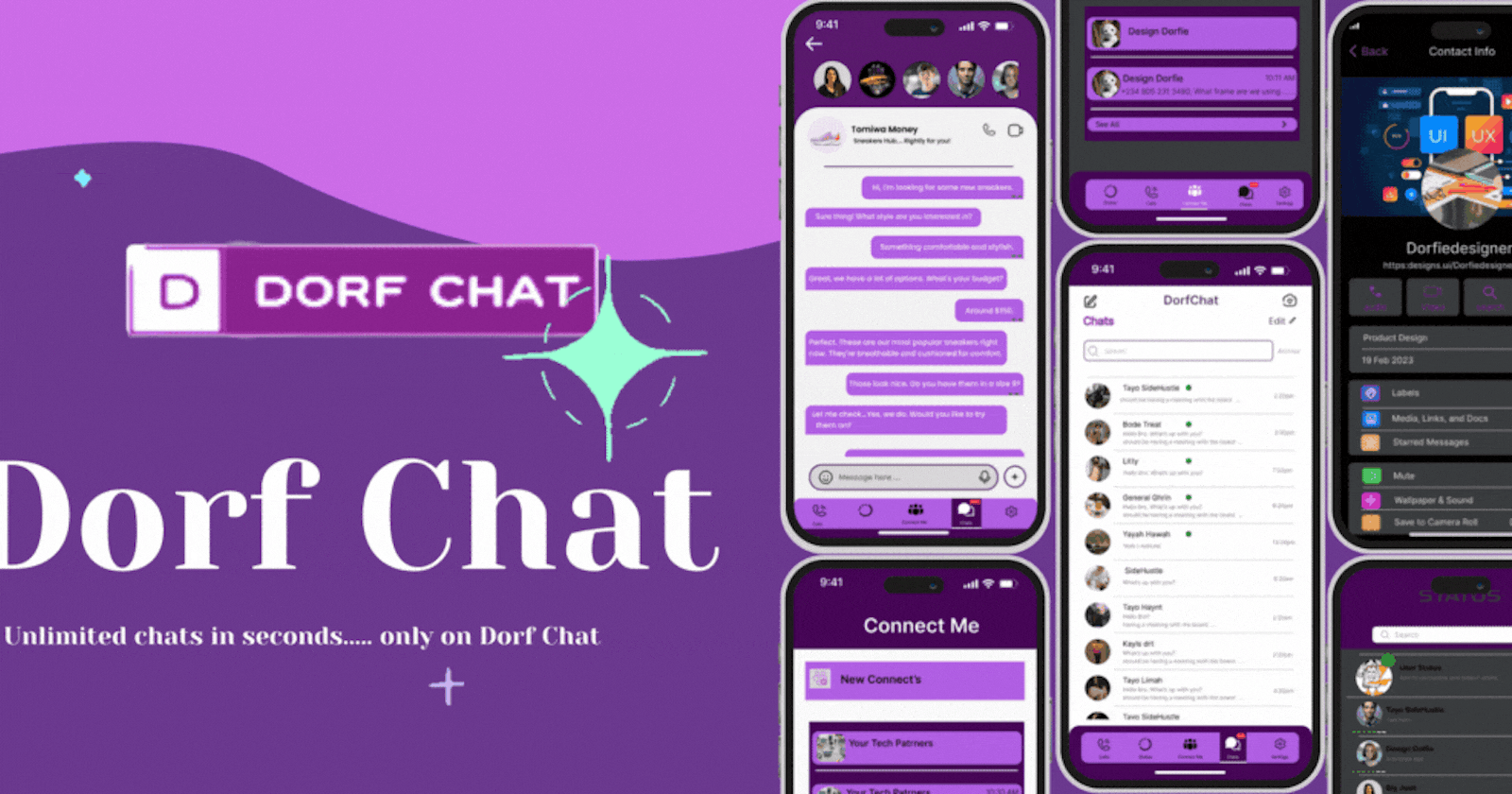
ABOUT:
With Dorf Chat, Design Dorfie Team sets out to create a revolutionary instant messaging app that addresses common user pain points and prioritizes personalization and security. In this UI/UX case study, we'll take you through our design process, challenges, and solutions that ultimately led to the creation of a chat app that users would love to use. So grab a seat and get ready to see how we transformed the user experience with Dorf Chat!
PROBLEM STATEMENT:
With so many instant messaging apps available, finding one that truly meets users' needs can be challenging. Here are some of the issues we aimed to address:
Instant messaging apps lack personalization and can feel generic, making it difficult for users to connect on a personal level.
Privacy and security concerns are major issues for users, with many feeling uneasy about their data being collected and shared.
Complex user interfaces can lead to frustration and a poor user experience, with cluttered navigation making it difficult to access key features.
OUR SOLUTION:
Our research helped us address common issues in existing instant messaging apps, offering innovative solutions that enhance our user experience.
Dorf Chat's 'Connect Me' feature offers a personalized experience by allowing users to join nearby communities based on interests.
Dorf Chat has a user-friendly interface with an intuitive design that includes both light and dark modes for customization and accessibility.
Dorf Chat offers a clean, easy-to-navigate user interface. Users can quickly and easily find the chat they're looking for.

DESIGN PROCESS:
Our design process for Dorf Chat prioritized user feedback to create a stress-free and enjoyable communication experience.

Discover Phase:
Understanding our Users: Quantitative Research
To identify our user preferences, we conducted an online survey through Google Forms. The survey garnered 31 responses, which helped us to accurately define their challenges and pain points.
Sample questions:- What's your age group?
Which instant messaging apps do you currently use? (WhatsApp, Telegram, Facebook Messenger, etc.)
Which of the instant messaging apps is your favorite?
What do you like most about the above-selected instant messaging apps you use?
What do you dislike most about the above-selected instant messaging apps you use?
What messaging app do you use asides from the one you've stated above and why?
Key Insights from our Survey:-
Social media is widely used: Over 90% of respondents use social media, with Facebook being the most popular platform.
Smartphones are the primary device for internet access: Almost 80% of respondents use their smartphones to access the internet, highlighting the importance of mobile optimization.
WhatsApp was the most popular instant messaging app among the respondents, with many indicating that they use it because of its speed, ease of use, and a broad range of features.
Telegram and Facebook Messenger were also popular choices among the respondents, with some preferring Telegram for its advanced features and privacy options.
The ability to make voice and video calls was very important to most respondents, and some suggested that they would like to see improvements in call quality and data consumption during calls.
Respondents had various suggestions for new features, such as the ability to edit already uploaded statuses, longer status durations, better video quality, and screen sharing during calls.
Smartphones are the primary device for internet access: Almost 80% of respondents use their smartphones to access the internet, highlighting the importance of mobile optimization.
Competitive analysis:
| Feature | Telegram | ||
| User base | Over 2 billion active users | Over 500 million active users | Over 2.9 billion monthly active users |
| Security | End-to-end encryption for all messages | Optional end-to-end encryption | Encryption for messages in transit |
| Messaging | Text, voice, and video messaging | Text, voice, and video messaging | Text, voice, and video messaging |
| File sharing | Supports a variety of file types up to 100MB | Supports a variety of file types up to 2GB | Supports a variety of file types up to 25MB |
| Business Features | WhatsApp Business API for enterprises | Telegram Bots for business automation | Facebook Pages for business promotion |
Define Phase:
Persona: We developed a total of 4 User Personas to gain a comprehensive understanding of our users' personalities, objectives, and pain points.
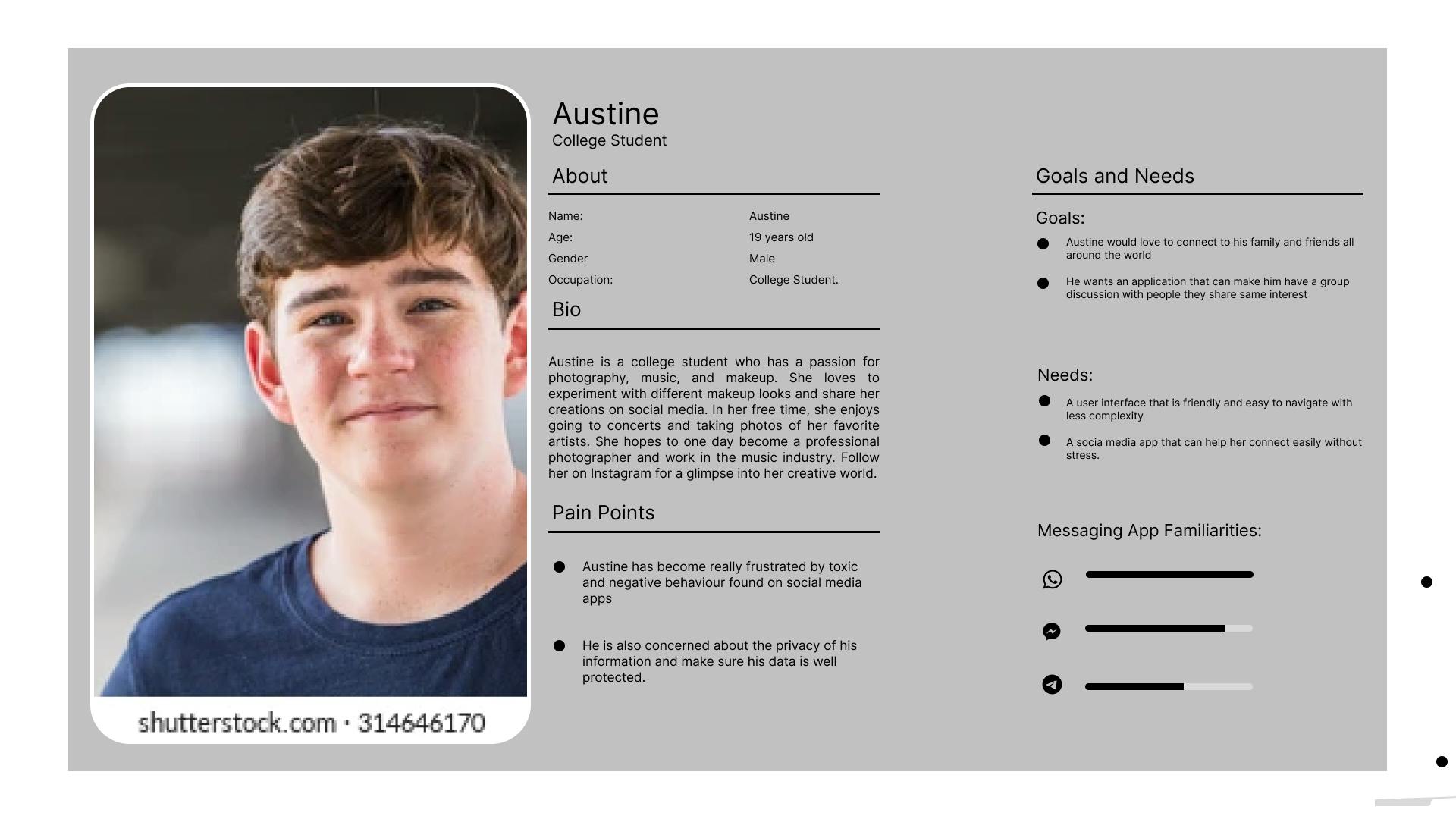

Empathy Map:-


Ideate Phase:
INFORMATION ARCHITECTURE:
Our information architecture is designed to support the wide range of functions available on Dorf Chat. From instant messaging to voice and video calls, we've made sure that the app can accommodate all the different ways our users communicate.

Prototype Phase:
Wireframes:
low fidelity:-

mid fidelity:-
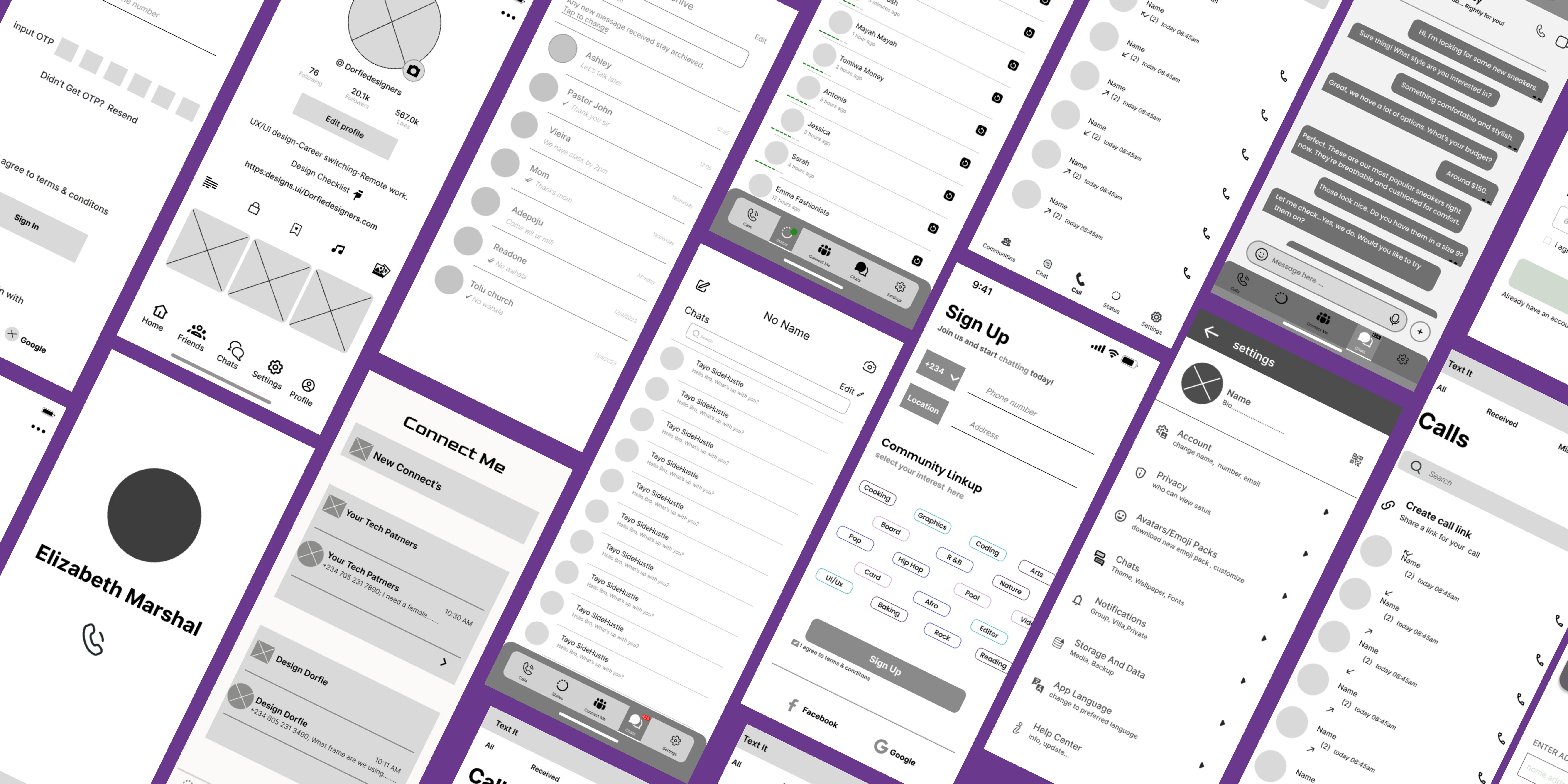
High Fidelity:-

Mockup (Light mode):-
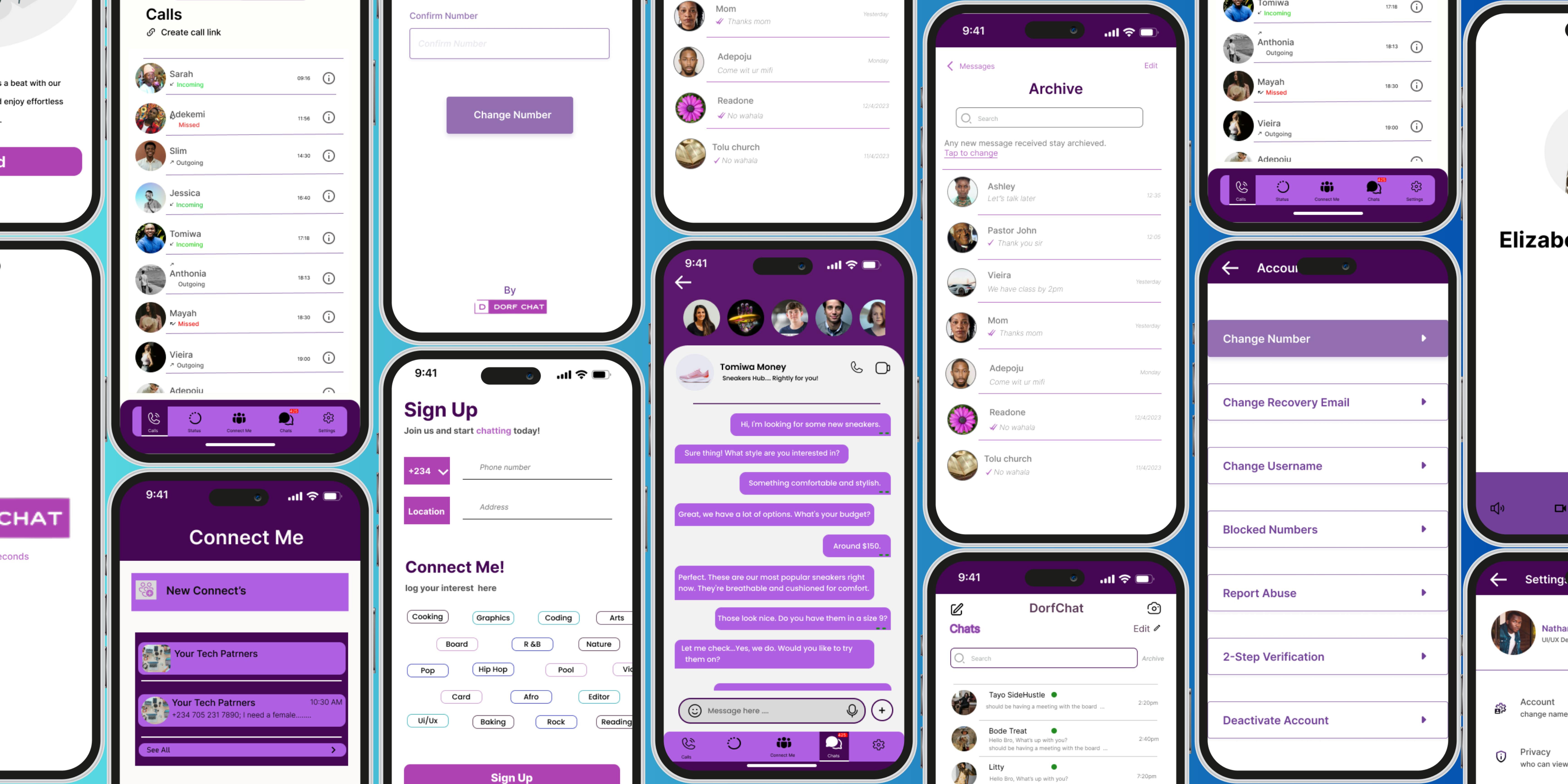
Mockup (Dark Mode):-
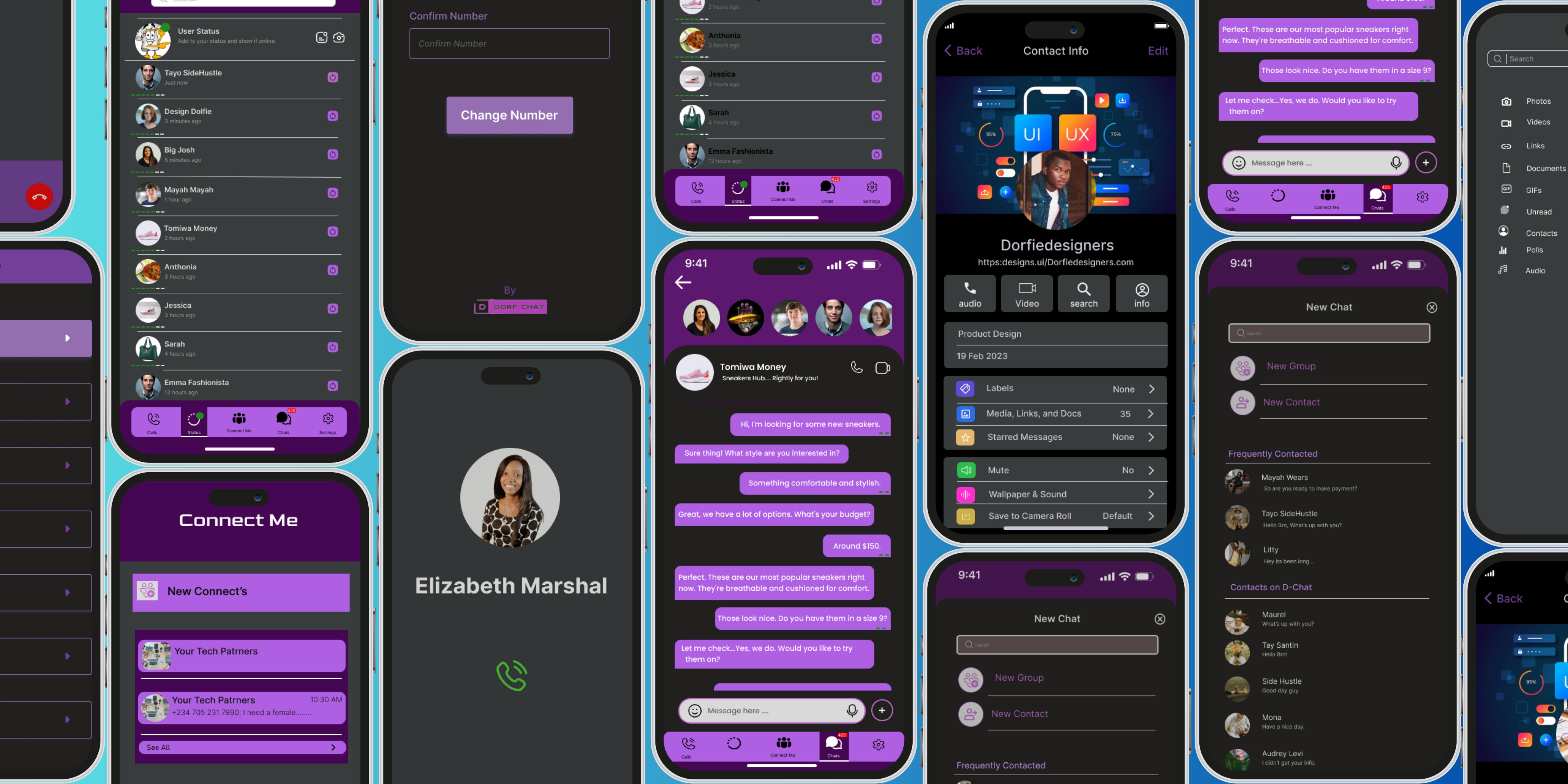
Prototype link
Figma file link
Get ready to witness the power of our teamwork and innovation as we proudly present our prototype in action!
Conclusion:
As with any project, there were challenges we faced (Design Dorfie Team) during the development and improvement of Dorf Chat. Some challenges include time constraints, difficulties in implementing certain features, and the need to balance user feedback with technical considerations. (pause.....
Introducing our innovative members:
play...) Despite these challenges, we demonstrated a strong commitment to creating a messaging app that meets the needs and preferences of its users. By continuing to prioritize user feedback and making thoughtful improvements to the app as Dorf Chat has the potential to become a leading instant messaging app in the market.
As a team, we learned the importance of collaboration and communication in the development process. By regularly sharing our progress and soliciting feedback from each other, we were able to identify and address issues early on, ensuring a smoother and more efficient workflow. We also learned to prioritize the needs of our users by actively seeking and incorporating their feedback into our design decisions.
"Coming together is a beginning, Learning together is progress, working together is success."
Team Design Dorfie.
